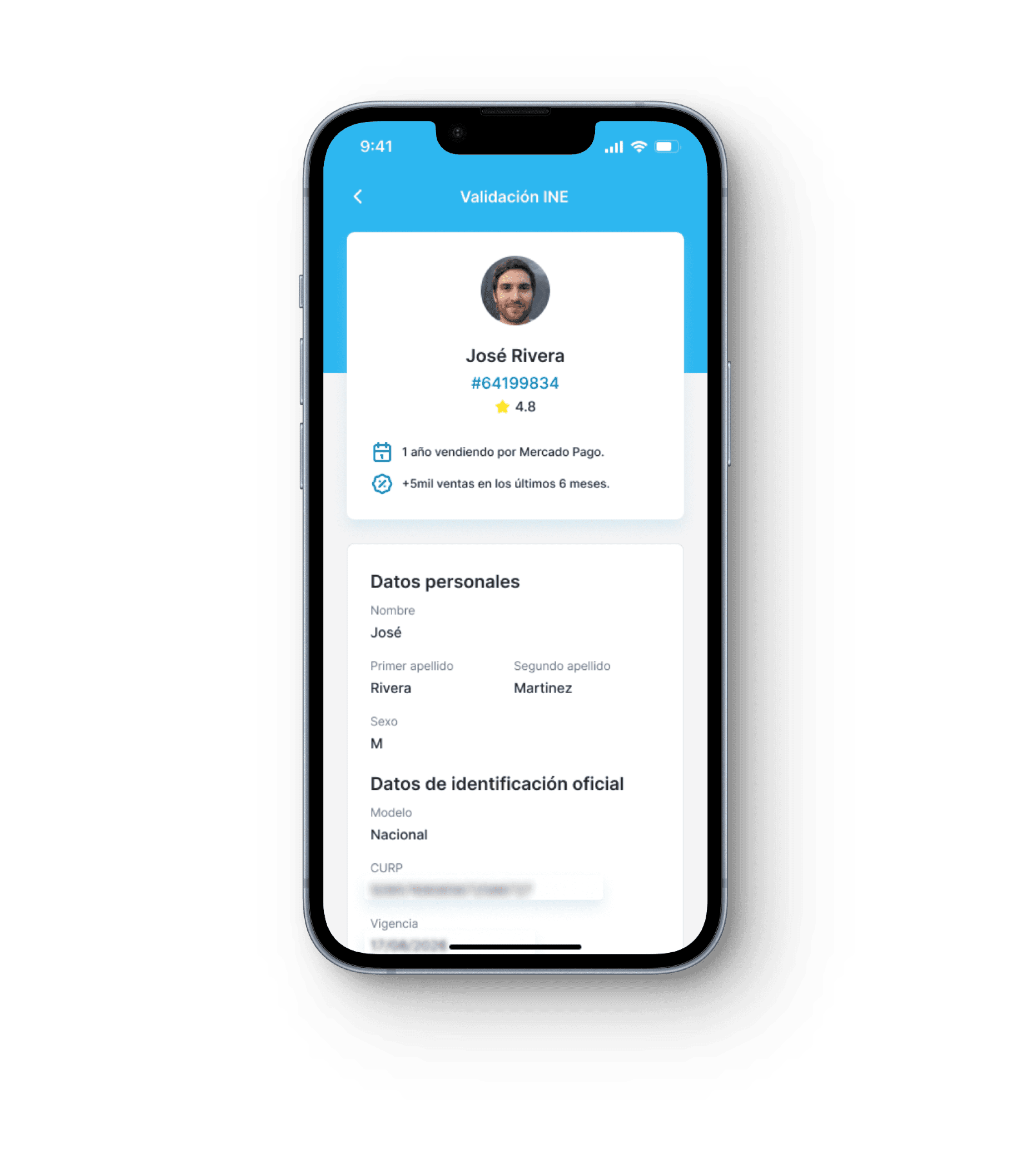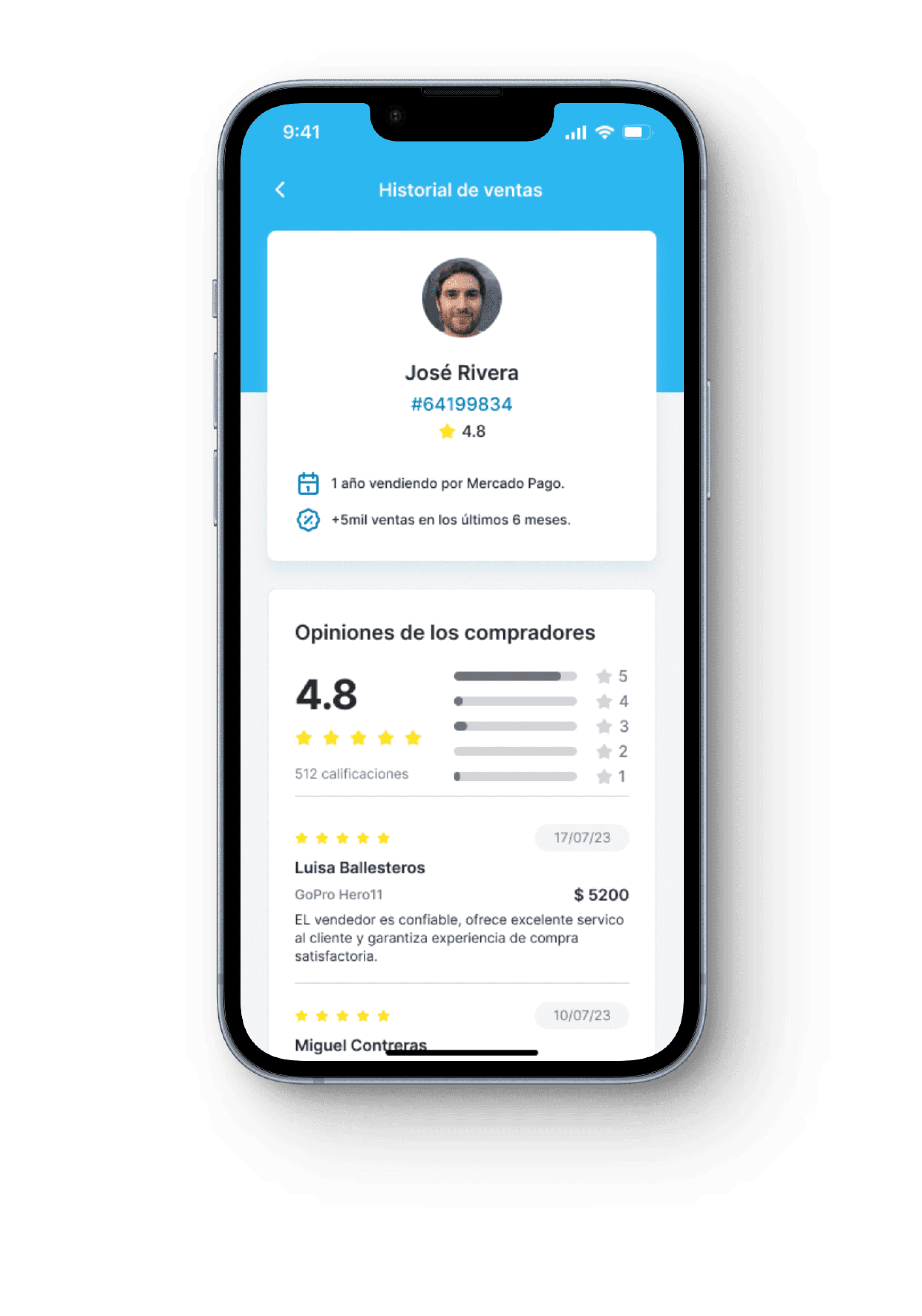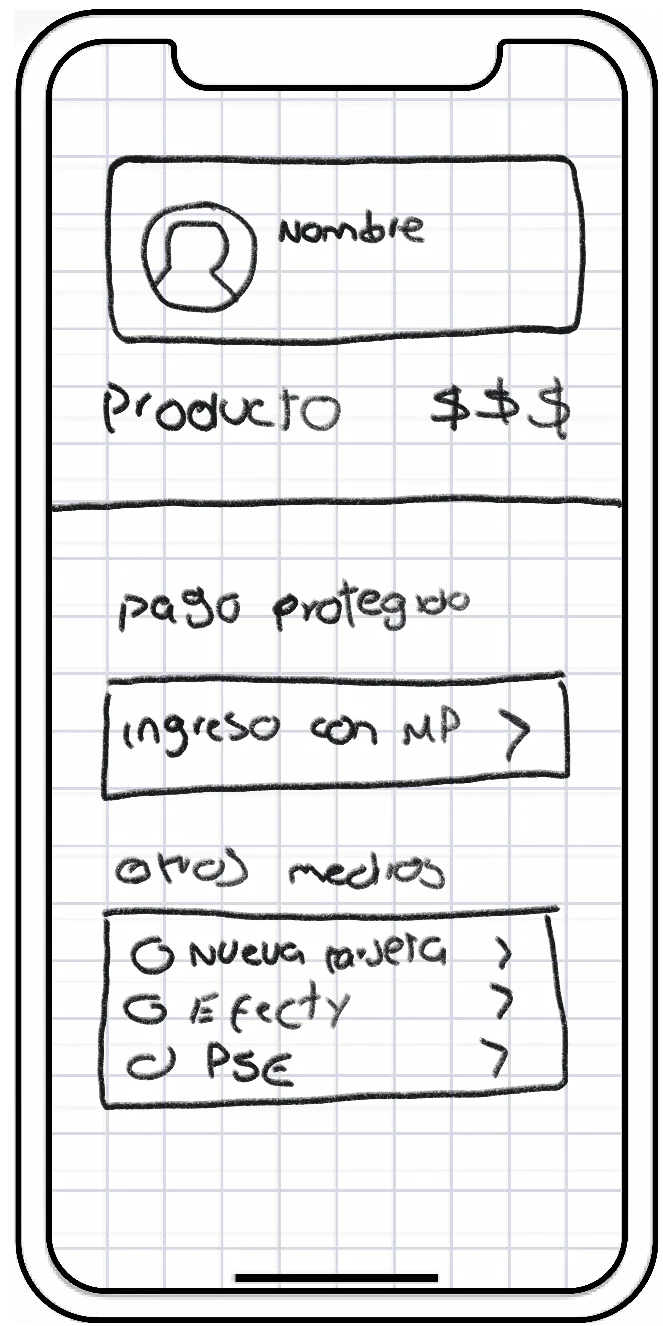App redesign
Fintech
Payments
Mercado pago: redefining payments on social media with Blockchain
Mercado Pago is one of the largest online payment platforms with presence in Latin America. It is very versatile, as it allows collecting payments through different channels: Link de Pago (social media and Whatsapp), QR, and Mercado Pago Checkout on online stores.
Due to the above, and mainly because of the payment functionality through a link, the platform is widely used for exchanges between natural persons.

In e-commerce there are many cases of scams during the transaction between individuals, which discourages many users from the buying process due to the lack of trust inherent in the exchange.
Therefore, the Mercado Pago application wants to provide the benefits of blockchain technology to its users through the Payment Link method by implementing secure, transparent, and immutable digital records.
Main pain points
In order to understand the main issues faced by users of the application when paying for purchases on social media, I reviewed the comments left on the Play Store.
Main goal
Develop and implement a comprehensive strategy to strengthen user trust to the maximum extent in the context of transactions carried out through social media platforms.
01
Implement a Vendor Verification System: Establish a mechanism to verify the authenticity and reputation of vendors and buyers, providing users with reliable information about the reliability of vendors.
02
Register Transactions on a Secure Blockchain: Implement a system where transactions made on social networks are immutably recorded on a blockchain, providing users with a transparent and verifiable transaction history and reducing the possibility of fraud.
03
Audit and Real-Time Transaction Tracking: Use blockchain technology to enable real-time auditing and tracking of transactions on social networks, allowing users to verify the authenticity and flow of transactions, providing greater confidence in the integrity of the process.
CAD Matrix
After gathering lots of information about the problem, the user, and the market, I decided to create a CAD matrix to pose some questions and hypotheses.
Certainties
Existe una falta de confianza en transacciones entre personas naturales en comercio electrónico.
Los usuarios temen perder dinero debido a estafas y fraudes.
Los compradores tienen dificultades para verificar productos.
Usuarios enfrentan problemas para resolver disputas.
La opacidad en las transacciones genera preocupaciones.
Assumptions
La implementación de registros seguros podría aumentar la confianza.
Los registros transparentes podrían solucionar la falta de transparencia.
La tecnología blockchain podría reducir el riesgo de pérdida financiera.
La tecnología blockchain podría agilizar la resolución de disputas por fraude.
Doubts
¿Cómo se medirá y cuantificará el aumento en la confianza?
¿Cómo aplicar un proceso amigable y eficaz de resolución para ambos usuarios registrados?
¿Cuánto tiempo tomaría el proceso de registro y verificación?
¿Cómo se asegurará la autenticidad y veracidad de los registros?
¿Realmente los usuarios quieren registrarse?

Prototyping
With the information obtained so far, I decided to create a proto-persona to guide me in conducting quantitative research through a survey. This proto-persona would guide me to seek users with similar characteristics to obtain a representative result.
Form
It was necessary to develop a quantitative form to validate the information collected in the CAD matrix.
01
Check if users want a feature that increases their security through registration.
02
Understand how users would like to handle disputes.
03
Verify if users identify what the added value is in incorporating blockchain into the platform.
12
Participants
Questions
User persona
The results of the qualitative research allowed me to create a user persona to synthesize the collected findings and continue the process with a specific type of end user in mind when designing.
Problem redefinition
How through a design that integrates blockchain technology to prevent the user from worrying and uncertainty about the authenticity of their purchase made through social networks.
User stories
To describe simply and directly the possible functionalities, I used user stories. With the help of this tool, I created several hypotheses in which a user would use the application.
Through these usage hypotheses, I validated whether the app would solve different problems and facilitate actions that the user needs to perform in different contexts.
Para mantener la confianza en compras por redes sociales quiero tener un historial completo de las transacciones de la persona con quien comercio.
No quiero introducir mis datos cada que pago por mercado pago.
Para darme más seguridad quiero poder hablar en forma de chat con las personas con las que el vendedor ha comerciado antes.
Para aumentar mi satisfacción, la aplicación debería recompensar a usuarios por compras exitosas y comentarios, y resolver disputas.
La aplicación debería detectar patrones sospechosos y alertar sobre posibles estafas antes de la compra.
Para ahorrar tiempo quiero ver en resumen el balance de transacciones satisfactorias e insatisfactorias.
Para sentirme segura en el momento de la transacción quiero ver los datos personales del vendedor.
Para aumentar mi tranquilidad mientras llega el producto quiero poder mantener comunicación constante con el vendedor.
Me gustaría que la app usara contratos inteligentes para establecer términos claros entre compradores y vendedores, evitando preocupaciones por estafas.
La aplicación debería integrarse con las redes sociales para verificar la reputación del vendedor directamente desde la app.
Para ver facilmente mis compras quiero poder filtrar el historial de compras por mercado pago.
Para evitar futuras disputas debería poder acceder a la factura del producto, o a su historial de transacciones.
Para asegurar la credibilidad de los vendedores, quiero calificar y comentar sus productos tras cada transacción, ayudando así a otros compradores.
Para mis productos recurrentes quiero crear listas de vendedores y poder categorizarlos.
Para aumentar mi confianza en el vendedor la aplicación debería ofrecerme opciones de verificación de identidad.
Eisenhower Matrix
Then I determined the effort needed to implement the functionality, based on my development knowledge, and the value generated for the user of each story.
The ideas that provided the greatest impact and required less effort were considered for the MVP.
User flow
As the research showed, most users tend to make their purchases through direct payment links, not within the application. For this reason, I chose to design starting from this starting point.
Crazy 8's
I used this technique to stimulate the rapid creation of ideas due to the short time available to complete the challenge. It consists of making eight sketches in eight minutes.
UI kit
I used the primary brand color along with an easy-to-read font like Inter. I decided that the design would be dominated by light tones, both on the surfaces and in the shadows, so that the interface would feel fresh and friendly.
My goal with these style guide choices was to offer a simple and clean interface that would help the user to quickly use the functions and focus on their main goal.
Wireframes
To verify compliance with usability and information architecture standards, I created low-fidelity wireframes, focusing on understandability, operability, and interface compliance.






























